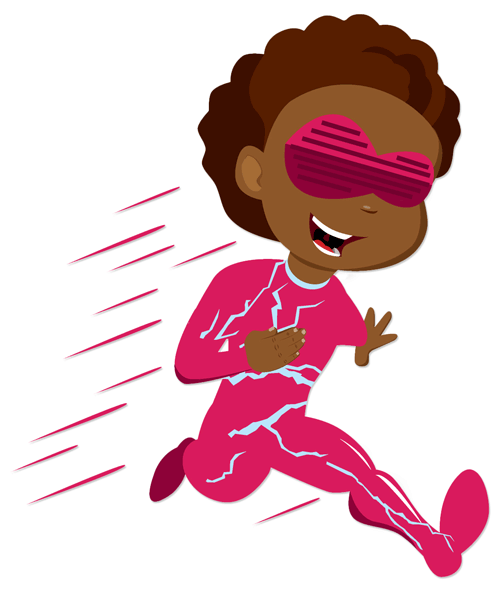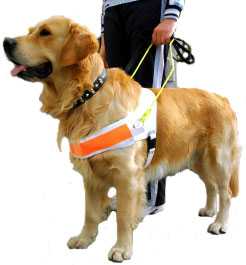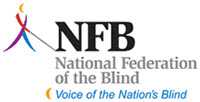What is it like to not be able to see?


What should you know?
Vision impairment means that a person’s eyesight cannot be corrected to a “normal” level. Vision impairment may be caused by a loss of visual acuity, where the eye does not see objects as clearly as usual. It may also be caused by a loss of visual field, where the eye cannot see as wide an area as usual without moving the eyes or turning the head. Let’s learn more…
Follow the 8 steps below for your Web Quest.
Step 1: See what you think about kids who cannot see. Take the Fact Checkup!
Step 2: Think about some questions to ask. Let’s see…
Step 3: Check out some quick facts.
Step 4: Check out some great websites to help you learn more.
Step 5: Find out about people you can read about to help with your Quest.
Step 6: Learn about movies and books that can give you information.
Step 7: Check out your school and neighborhood.
Step 8: Now see if your attitudes have changed. Take the Fact Checkup again.

Let’s see…
If kids can’t see, can they read and write like other kids? What causes vision loss? How do people with vision impairment get around? Does being blind make you sad all the time? Can a blind person go shopping? Do blind kids recognize colors?
Some things to think about….
- Can someone who is blind use money?
- Can someone who can’t see match the colors of their clothes in morning?
- Is it ok to pet a seeing eye dog?
- Should I help someone who can’t see cross the street?
- How do people who are blind read the newspaper?
Can you think of more questions to help you in your Quest?
Click here to write them down so you’ll remember them as you move through this QUEST.
Quick Facts

Here are some facts that may help you answer some of your Web Quest questions. Remember, these facts will only give you basic information.
- Vision impairment is not very common among children.
- Nearly two-thirds of children with vision impairment also have at least one other developmental disability, such as intellectual disabilities, cerebral palsy, hearing loss, or epilepsy.
- Vision impairment is more common in older people than in children.
- Guide dogs are the guiding eyes for people who are blind or visually impaired, and they are specially bred and trained for this most important job.
World-Wide Web Search

Kids Health: What is Vision Impairment
What would life be like if you couldn’t see a dog wag its tail or watch a ladybug crawl through the green grass? You might try to imagine it. But for some kids, using their imagination doesn’t help because they can’t see. These kids are blind or visually impaired. Learn about:
- What vision impairment is and what causes it.
- How a doctor tests for vision impairment and how vision impairment is treated.
- How kids with vision impairment learn.
- What it is like to live with vision impairment.

Guide Dogs for the Blind
The K9 Buddy program connects the youth who is blind with a community of puppy raisers and other supporters. These dogs are not service dogs but rather companions for kids who are blind. Also watch a video about the program.

Guide Dog Foundation for the Blind
Guide dogs are the guiding eyes for people who are blind or visually impaired, and they are specially bred and trained for this most important job. View these guidelines about how to respect a service dog when you see them in public.

National Federation of the Blind
Check out some questions from kids about blindness and read the answers. NFB receives many letters and questions from children who wish to learn more about blindness. They have developed this list of some of the most often asked questions by blind children, and we think it is just as important for sighted children, too.
People
Read about people who are blind, but continue to play sports. Watch this video about sports in which people who are blind participate.
United States Association for Blind Athletes
View this video that shows blind athletes participating in sports.

Marla Runyan
Marla Runyan (born January 4, 1969) is a marathon runner who is legally blind. She is a three-time national champion in the women’s 5.000 metres. Runyan’s career as a world-class runner began in 1999 at the Pan American Games, where she won the 1,500-meter race. The next year, she placed eighth in the 1,500-meter in the 2000 Sydney Olympics, making Runyan the first legally blind athlete to compete in the Games and the highest finish by an American woman in that event. In 2002 she finished as the top American at the 2002 New York City Marathon with a time of 2 hours, 27 minutes and 10 seconds to post the second-fastest debut time ever by an American woman.

David Alexander Paterson
David Alexander Paterson (born May 20, 1954) is an American politician and the former Governor of New York from 2008 to 2010. He is the first African American governor of New York and also the second legally blind governor of any U.S. state after Bob C. Riley, who was Governor of Arkansas for eleven days in January 1975. At the age of three months, Paterson contracted an ear infection which spread to his optic nerve, leaving him with no sight in his left eye and severely limited vision in his right eye.
Movies and Books
Here are some books that may be of interest about blindness.

Do You Remember the Color Blue? And Other Questions Kids Ask about Blindness (book)
by Sally Hobart Alexander, J. Davis (Editor), J. Carey (Editor)
Publisher: Puffin (March 18, 2002)
Reading Level: Ages 9 to 12
Sally Hobart Alexander lost her sight to disease at the age of 26. A writer, she also speaks to groups, and especially to young people, about her blindness.

Sage’s Big Adventure: Living with Blindness
Author: Gayle M. Irwin
Reading Level: Ages 9-12
Publisher: Xlibris Corporation (July 11, 2007)
Not long ago in a backyard filled with bright green grass lived a dog named Sage. She was white with many large black spots, and even some small ones! Her fur was wavy, even on her tail! Sage was a Springer Spaniel, a type of dog that loves to smell, listen, look for, and find birds. Sage, like many Springer Spaniels, loved to explore. But, Sage sometimes had a difficult time walking, playing and discovering. You see, Sage also had a secret – she could not see. Sage was blind.

Explaining Blindness
Authors: Lionel Bender
Publisher: Smart Apple Media (August 2009)
Reading Level: Ages 9-12
Information about how to explain blindness.

Can You Feel the Thunder
by Lynn E. McElfresh
Publisher: Atheneum; 1st edition (June 1, 1999)
Reading Level: Ages 9 to 12
Seventh-grader Mic’s older sister, Stephanie, is deaf and blind, and he’s become acutely sensitive to the funny sounds she makes, how sloppily she eats, and how much of the family’s attention seems to go to her.
My School and Neighborhood
Kids who are blind learn to read using an alphabet called braille. Go to this website to learn more about braille.

The Braille Bug Website
The American Foundation for the Blind (AFB) created the Braille Bug web site to teach sighted children about braille, and to encourage literacy among all children.
Links outside this website
We provide links to other web pages if you want to learn more about a topic. Some of these pages are on the CDC web site and others are on outside websites. Links to organizations and companies outside of CDC are included for information only. CDC has no control over the information at these sites. The views and opinions of these organizations are not necessarily those of CDC, the Department of Health and Human Services (HHS), or the U.S. Public Health Service (PHS).
- Page last reviewed: February 7, 2015
- Page last updated: February 7, 2015
- Content source:


 ShareCompartir
ShareCompartir